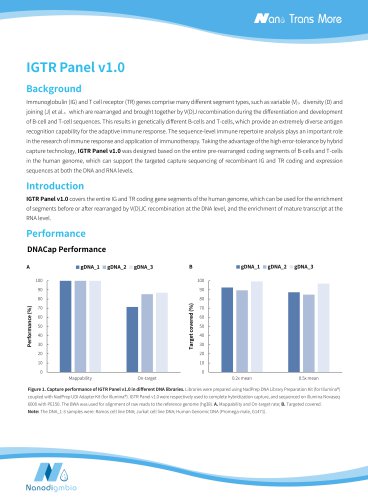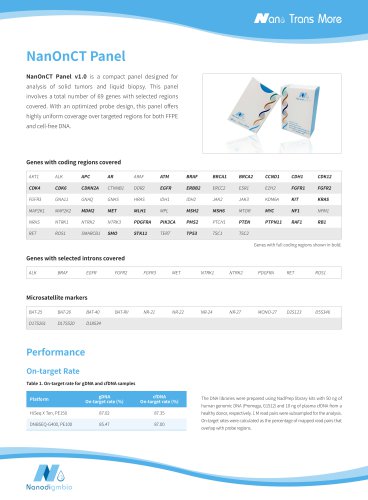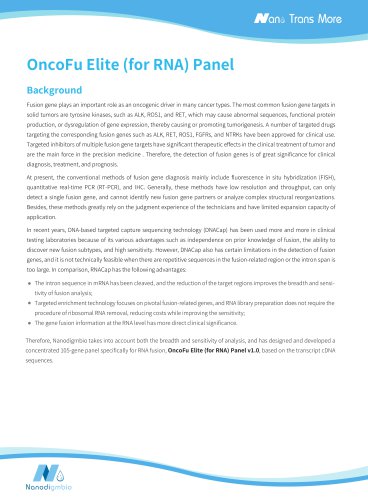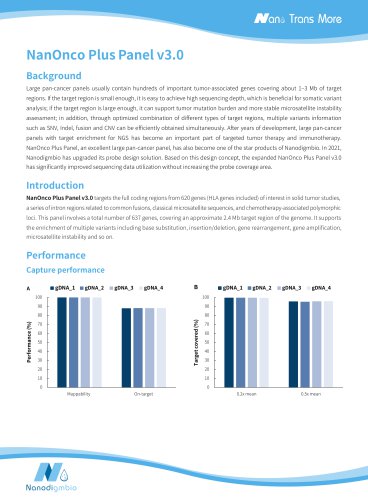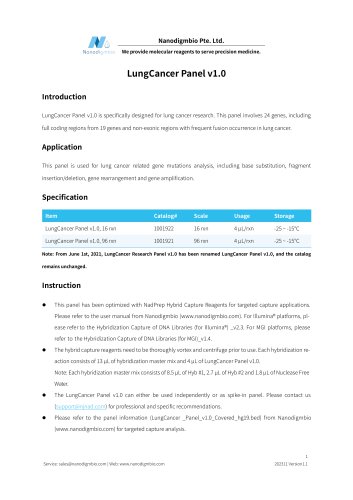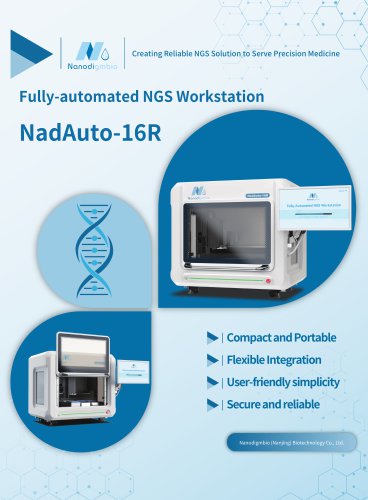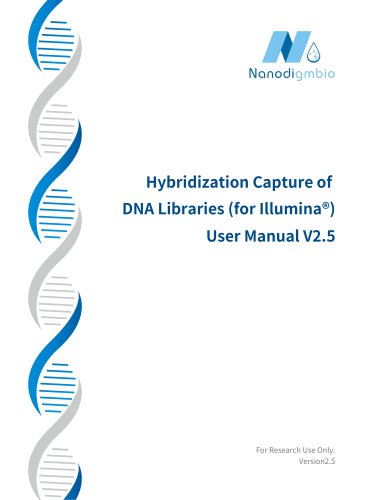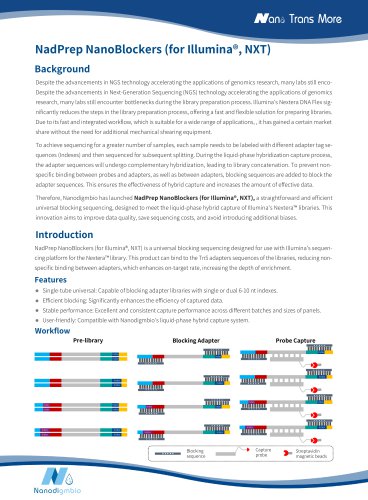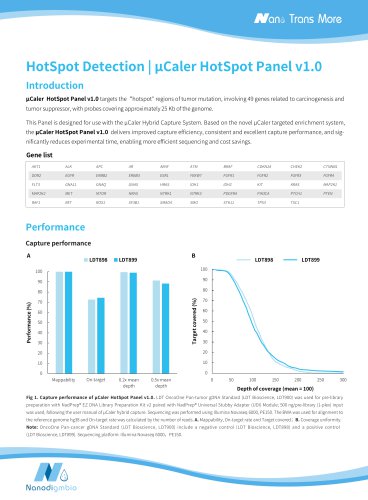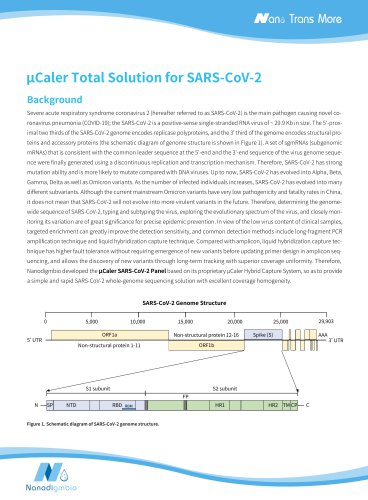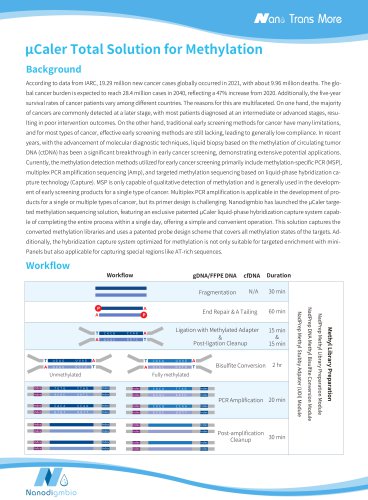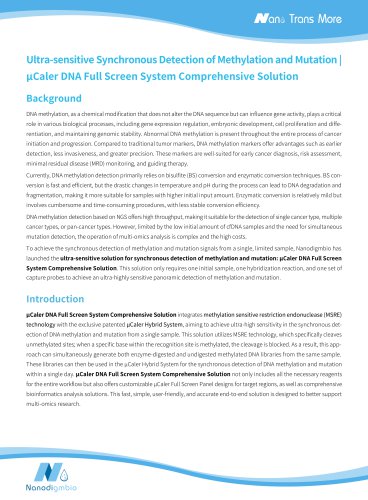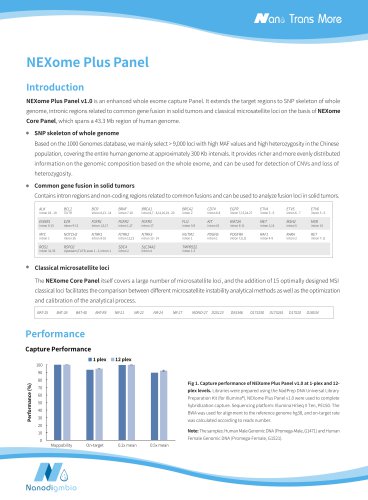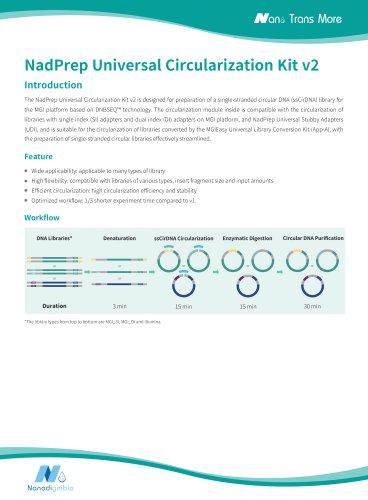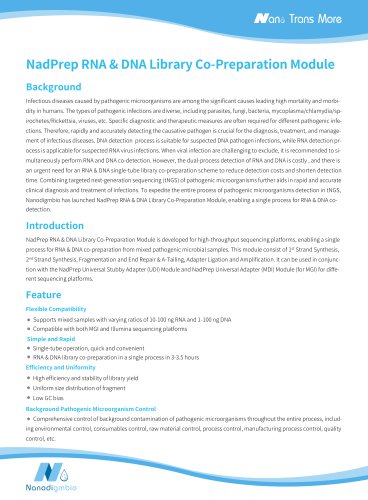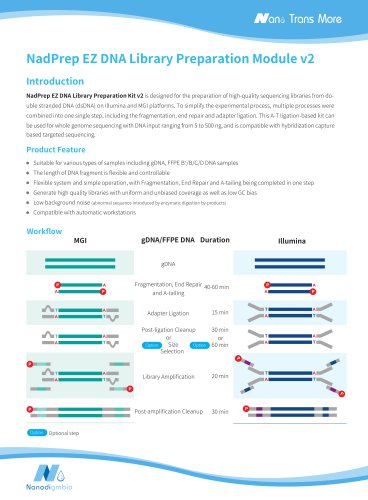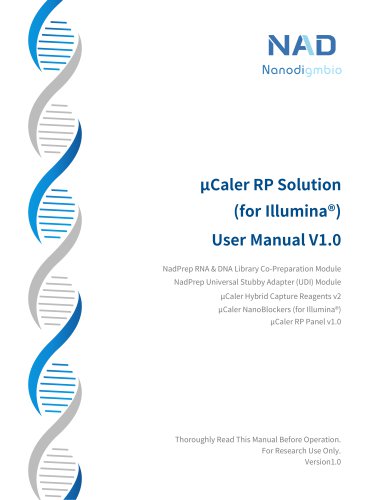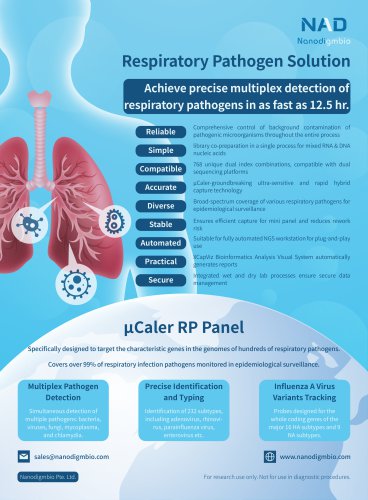 Website:
Nanodigmbio
Website:
Nanodigmbio
Catalog excerpts
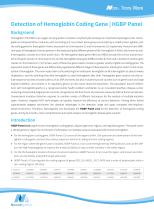
Hemoglobin (Hb/HGB) is an oxygen-carrying protein complex in erythrocytes and plays an important physiological role. Hemoglobin is composed of four subunits, each consisting of a non-protein heme group surrounded by a coiled protein (globin), and the coding genes for these globin chains are present on chromosome 11 and chromosome 16, respectively. Humans have different types of hemoglobin that are present in the body during the different phases of life. Hemoglobin A (HbA), also known as adult hemoglobin, consists of a-chain and p-chain. The hemoglobin alpha gene (HBA1 and HBA2) encode the a-chain and are located in the gene cluster on chromosome 16, and the hemoglobin beta gene (HBB) encodes p-chain and is located in another gene cluster on chromosome 11. For humans, each of these two gene clusters contains a greater variety of globin-encoding genes. The expression levels of these genes are differentially regulated at different stages of development, allowing for switch in the composition of hemoglobin. The main nodes refer to the switching from embryonic hemoglobin to fetal hemoglobin at about 6 weeks of gestation, and the switching from fetal hemoglobin to adult hemoglobin after birth. Hemoglobin gene variants not only include sequence variants at small scales such as SNP and InDel, but also include structural variants such as gene fusion and large fragment deletion, and variants in its regulatory genes can also cause abnormal expression. The population load of children born with hemoglobinopathy is a recognized public health problem worldwide. As an incurable hereditary disease, carrier screening and prenatal diagnosis are currently recognized as the first choice of preventive measures both at home and abroad. Conventional mutation detection requires to combine variety of different techniques for the analysis of multiple mutation types. However, targeted NGS technologies can greatly improve the efficiency of variant detection. Among them, hybrid capture-based targeted enrichment has absolute advantages in the detection range and types compared with amplicon-based enrichment. Therefore, Nanodigmbio has developed the HGBP Panel v1.0 for the detection of hemoglobin coding genes, aiming to provide a more comprehensive and rapid analysis on hemoglobin disease gene variants. HGBP Panel v1.0 targets human hemoglobin coding genes, adjacent genomic regions, and regulatory genes. The panel covers a 160 Kb genomic region for enrichment of information on multiple variants associated with human hemoglobin. • For the hemoglobin coding gene, HGBP Panel v1.0 covers all the regions within 1 Kb upstream and downstream of the hemoglobin coding gene, and enriches various sequence variants in coding and non-coding regions; • For the region where the gene cluster is located, HGBP Panel v1.0 can cover the high-density SNP backbone, and use the SNP loci with high heterozygosity to improve the analytical ability on copy number variation in the whole region; • For the the breakpoint location of known structural mutations, HGBP Panel v1.0 can cover the region, and known recombination can be directly analyzed through split reads; • HGBP Panel v1.0 can regulate the coding regions of genes (BCL11A, HBS1L, KLF1, MYB) and a series of polymorphic sites in non-coding regions (30 sites);
Open the catalog to page 1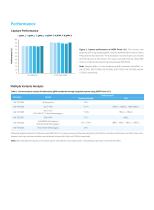
Figure 1. Capture performance of HGBP Panel v1.0. The Libraries were Preparation Kit (for Illumina®). The hybridization reaction (6-plex) was initiated prepared with 50 ng standard gDNA, using the NadPrep DNA Universal Library with 500 ng input of each library. The capture was performed by using HGBP Panel v1.0, followed by sequencing using Novaseq 6000 PE150. Note: Samples gDNA_1-6 were thalassemia gDNA standards (GeneWell), i.e., On-target rate Multiple Variants Analysis Table 1. Variant analysis results of thalassemia gDNA standards through targeted capture using HGBP Panel v1.0....
Open the catalog to page 2
Copy number Figure 2. Copy number of α gene cluster segments in thalassemia gDNA standards through targeted capture using HGBP Panel v1.0. As shown in figure above, copy number analysis still visually reflected the copy number of each gene in the region when the breakpoint location failed to be captured or the recombinant sequence cannot be distinguished. Note: Samples are thalassemia gDNA standards (GeneWell, GW-TGTS006). Ordering Information Product For research use only. Not for use in diagnostic procedures. Without the written permission of Nanodigmbio, no other individual or...
Open the catalog to page 3All Nanodigmbio catalogs and technical brochures
-
Nanodigmbio- IGTR Panel v1.0
4 Pages
-
Nanodigmbio-NanOnCT Panel
2 Pages
-
Nanodigmbio-NGS HRR Panel
2 Pages




